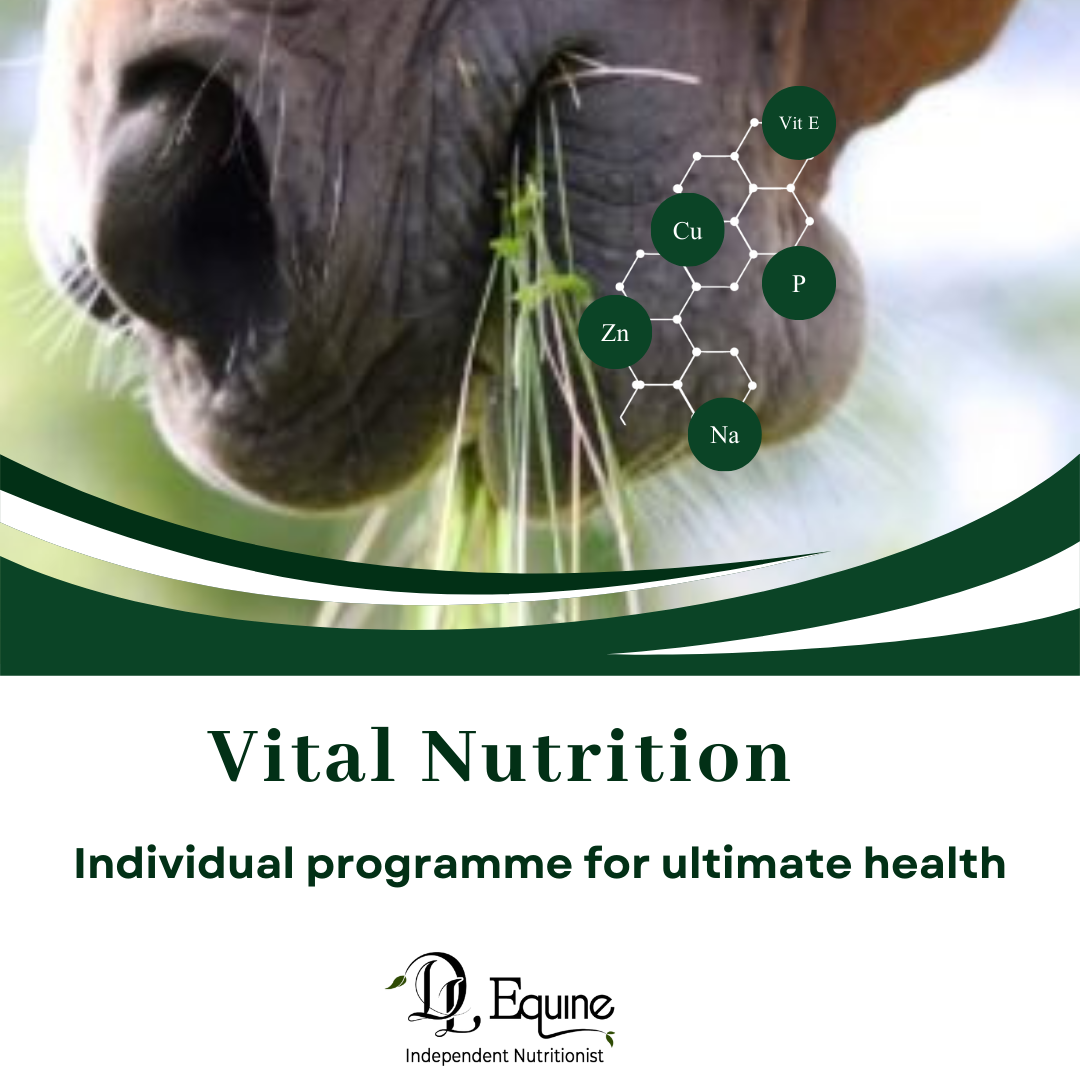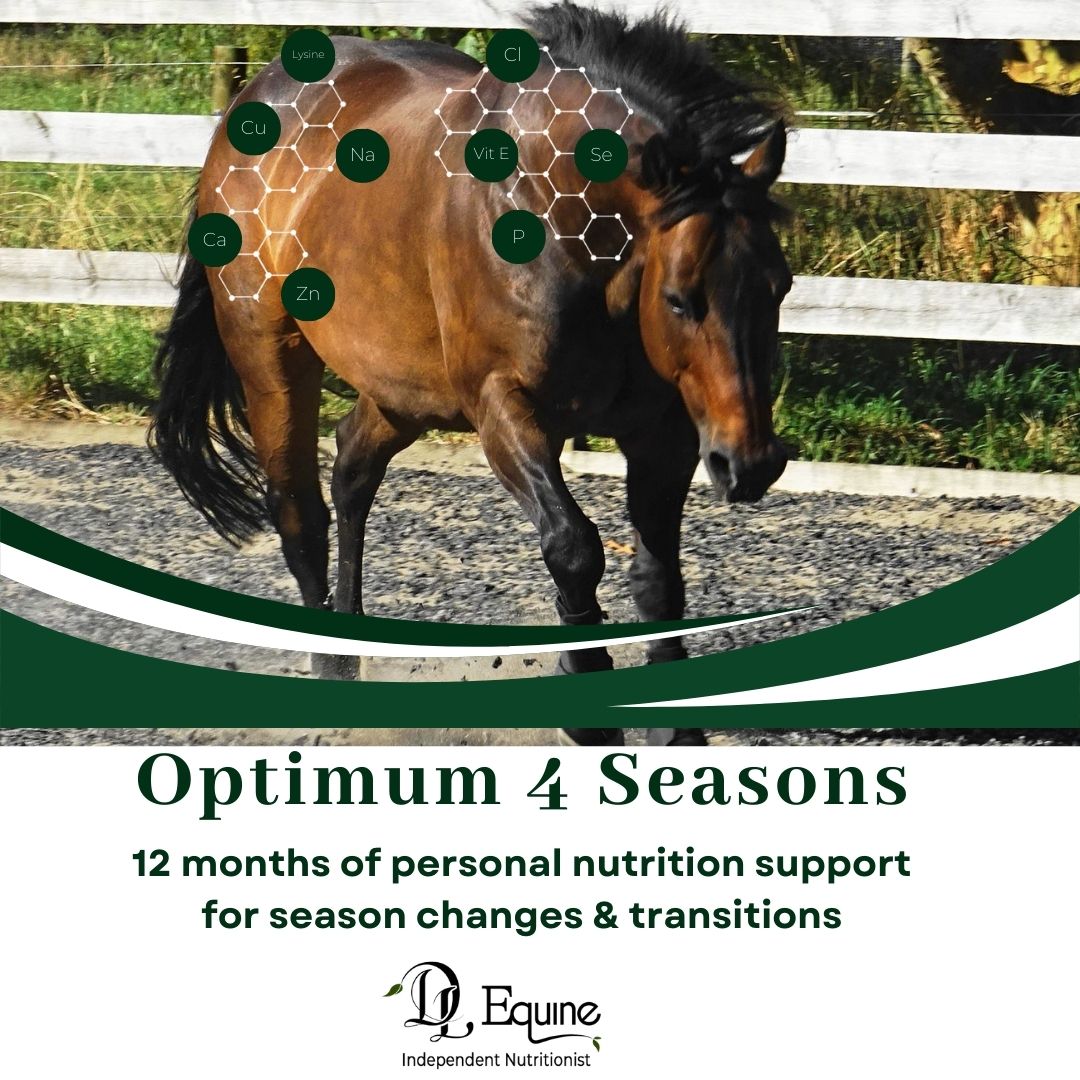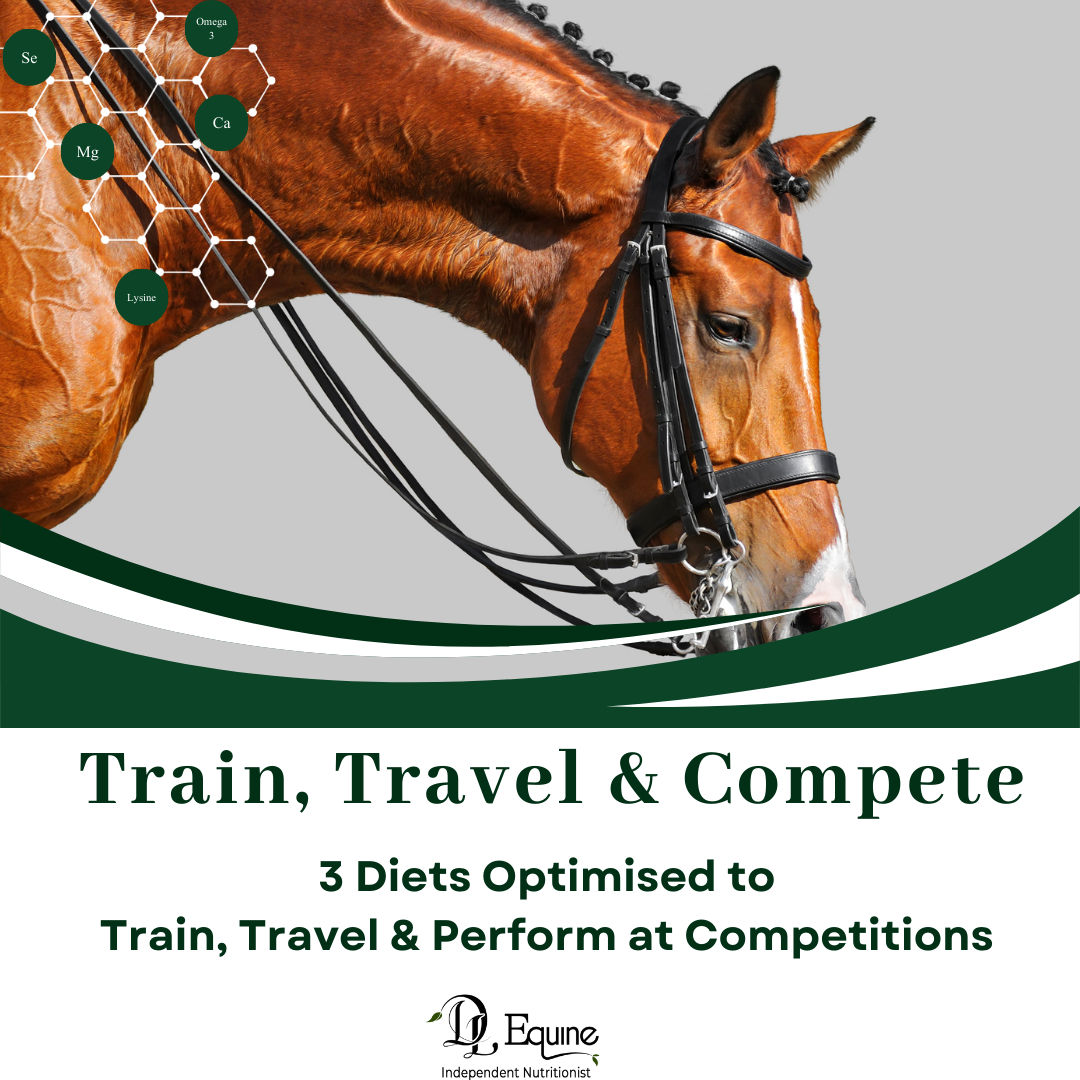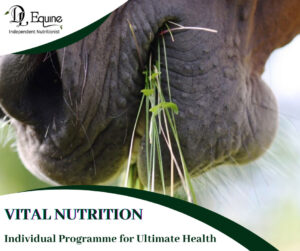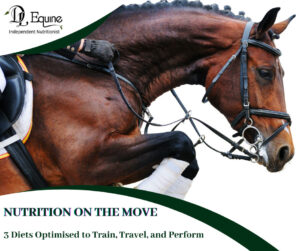Did you know that the health of your horse’s microbiome (the good bugs in its gut) have more influence on their athletic performance than their genetics do?
What does this mean for you the rider in real life? It equates to feeding your horse primarily thinking of keeping those gut microbes happy and healthy, before, during and after competition.
This nutrition can play a significant role in achieving peak athletic performance in horses.
Give your horse the best chance of performing well at competition by planning and feeding the correct diet to prepare your horse.
High intensity exercise and performance horses train and compete under a variety of stressful conditions that can adversely affect health and performance. For these reasons there are important feeding and management strategies that can be implemented to reduce many of these problems.
Working at any level, especially when it includes travel, means your horse is at a higher risk of health issues such as gastric ulcers (EGUS), hind gut acidosis, dehydration and tying up, which can all contribute to reduced or lower performance.
Where should you start with feeding?
Think about the energy your horse requires and in what form to provide it.
Energy comes from multiple sources in a horse’s diet:
• Fibre (structural carbohydrates),
• Fats
o Both are broken down and absorbed relatively slowing and consequently, are often referred to as ‘slow release’ energy sources.
• Sugar/starch (non-structural carbohydrates)
o Absorbed into the bloodstream more quickly and are often referred to as ‘quick release’ energy sources.
• Protein = not normally used as an energy source
Fibre:
For any situation including when exercising hard, there is a need to meet energy requirements; your first port of call will always need to be a high quality, highly digestible fibre sources. Performance horses should receive forage intake at @ 1.5 – 2% of body weight.
These fibre sources such as quality hay, lucerne, beet pulp, lupins and soy hulls will be high energy, low starch therefore very ‘gut friendly’. As they will be a great source of food to the hind gut microbes which will break them down into volatile fatty acids which can be used to release energy slowly over a period of time.
Fuel for Energy:
Horses store energy in the form of glycogen in muscle and liver and as fat in adipose tissue. To a much lesser extent, amino acids (from protein breakdown) can also be used for energy.
Similar to our homes, where the energy derived from coal or water must be converted to electricity before it can power your electronics, in a horse the chemical energy in food must be converted to a form that can be utilised by the body (ATP – adenosine triphosphate).
• Glycogen is a branched structure of glucose (sugar) molecules bound together.
• During exercise, glycogen and fat are broken down to make energy in the form of ATP (adenosine triphosphate).
• This powers muscle contraction and other processes involved in exercise.
Glycogen provides a rapidly available source of energy. However, glycogen stores can be depleted then the horse will need to rely on stored fat, amino acids, and dietary sugar to extract energy.
Fatigue arises when blood glucose levels are low and amino acid breakdown is accelerated.
The performance horses’ s fuels are fats and carbohydrates, in the forms of free fatty acids and glucose. The type, intensity and duration of exercise will determine the amount of each form of fuel used and therefore the types of feed and ratios in the diet. This is where it is best to get a nutritionist involved in helping you design the best possible diet for your horse at work.
If you have your horse fit and exercising at heavy levels your horse can have a 60% higher energy demand compared to maintenance. The amount of energy available for muscular work is the most important factor in a horse’s performance.
*(To a much lesser extent, amino acids (from protein breakdown) can also be used for energy. Many of our pasture-based horses will already be on a high level or protein; however, remember high levels of protein will not cause excitability or increase the risk of health issues such as laminitis or tying up.)
There are basically two main ways in which horse cells generate energy when exercising.
Aerobic metabolism
During slower, longer exercise such as in the warm up, during endurance and in the trekking horse, the body mainly uses the burning of fatty acids by oxygen to produce energy. This mechanism is highly efficient, being an almost inexhaustible source and does not produce lactic acid.
It is called aerobic metabolism = With Oxygen
• Fibre is broken down via fermentation in the hindgut of the horse by its microbes.
• They produce volatile fatty acids (VFAs) which are absorbed into the bloodstream.
• VFA can either be used immediately to provide slow-release energy for the work being done or,
• Transported to the liver to be converted to glycogen which is then stored in the muscles and liver for energy use at a later stage.
• This is a slow process that creates slow-release energy, for controlled energy and improved stamina levels.
Aerobic metabolism is more energy efficient and produces less lactic acid compared to anaerobic metabolism and horses are therefore able to sustain this level of exercise for prolonged periods of time.
Great slow-release energy feeds are lucerne, sugar beet pulp (almost the same energy as oats), lupins, soybean hulls, peas etc.
Anaerobic metabolism
During faster, powerful exercise such as reining, show jumping, polo or even higher-level dressage, the muscles will predominately use anaerobic metabolism = Without Oxygen
Produced using starch.
• Enzymes in the small intestine quickly break down starch into glucose.
• This glucose is quickly absorbed into the bloodstream and can be used a ‘fast release’ or ‘instant’ energy.
• Any blood glucose that is not immediately used for work is stored in the muscles as glycogen for later use.
During this type of metabolism, muscle and liver glycogen stores (from carbohydrates) serve as the primary energy source. Body stores of both are relatively small, so depletion occurs quickly, and once the glycogen is depleted, the horse becomes fatigued.
Anaerobic metabolism or specifically anaerobic glycolysis; is less efficient than aerobic both in choice of fuels and end product produced. The end products of anaerobic metabolism are lactate and heat.
Some horses may require energy sources from feeds such as extruded or micronized cereal grains, extruded rice, soybean meal and canola meal.
Fats
A recommendation is to add fat to the diet as this can increase muscle glycogen storage that can improve performance, particularly that of high-intensity, short-term, anaerobic work.
Oil improves stamina in the horse as it has what is termed a ‘glycogen sparing’ effect.
Meaning during the aerobic phase of exercise in horses fed fats, this energy is used before the glycogen that is stored in the muscles.
This effectively provides the horse with an additional source of energy to use during exercise periods, providing an overall larger energy reservoir.
Meaning more “fuel”, or energy, in their tank when they shift into an anerobic state can allow them to compete at a higher level for a longer period of time.
I suggest an oil such as marine sourced or flaxseed. This is @ 2.5 times higher in energy compared to cereals and starch free. As such oil is considered ‘cool calorie feed’ as do not contain starch so wont upset the hind gut microbes and behaviour.
Its important to remember – It can take weeks to see a response from a higher fat diet as the body adjusts and the more fit the horse, the more efficient it is in energy utilization.
To optimize the energy in you competition horse it is necessary to feed the right types of feed, at the right times.
Feeding high-quality forages, digestible fibre sources, and adding fat and extruded grains if necessary are the best way to fuel your horse during competition whilst keeping the gut happy!
How much and which feed to select will obviously depend on your individual horse’s needs. Factors to consider include body condition, discipline, weight and age.
Please feel free to contact me for help with a personalized feeding programme.
Feeding Times –
1/Prior to exercise
Fibre Feeding
A horse should always exercise with fibre in its stomach. Feeding fibre has multiple advantages:
- A horse must chew long stemmed fibre, like hay and this produces saliva.
- This saliva aids in the movement of food thru the digestive system.
- The saliva also aids in buffering the stomach acid that is Continually produced in the stomach.
- The fibre forms a protective matt that prevents the acid from splashing up into the upper unprotected areas of the stomach, therefore preventing gastric ulcers that can form in that section.
Therefore, if a horse is stabled or penned at competition, without constant access to forage, or if it has been more than 2 hours since the horse last grazed or fed, you should feed your horse fibre before exercise.
A good recommendation is feed 200g/100kg body weight if it has been 2 hours since your horse last ate. Or if they were happily munching away on their hay then keep them eating that hay as you tack up for riding.
Grain Feeding
If your horses normal feed contains grain, then do NOT feed it within 4 – 5 hrs of a ride. This is due to the higher starch and sugar in the grain feed. In this situation the blood glucose and insulin levels following a grain feed generally peak at 2 to 3 hours following a meal and return to normal within 4 to 5 hours. Insulin is the hormone that tells the horse’s muscles and organs to store away glucose.
So what you don’t want is insulin present in the horse’s blood when exercise begins, because due to the insulin having instructed muscles to store away all their glucose, the horse cant use it to fuel the muscles for the work. And when this happens your horse can run out of energy supply to its muscles and become fatigued quickly.
See research of Pagan and Harris, 1999, who proved feeding did not decrease free fatty acid and glucose availability; therefore, performance will not be limited by the decreased fuels as seen with grain meals prior to exercise.
Also research of Lawrence et al., 1993.
If you are feeding higher level endurance horses, they perform best when fed a forage-based diet with high energy and nutrient density. These horses may be fed small grain-based meals during a race, but you should avoid excess grain consumption. Remember these grains have a high glycemic response and quickly spike their blood sugar.
Always feed extruded or cooked grains and limit the meal to 200 g of grain per 100 kg of bodyweight so that you don’t induce a large increase in blood insulin levels.
Instead, for this exercise, fat is preferred as an energy source because it has a low glycaemic response and provides slow-release energy. So build up the horses fat content of the diet slowly over a period of time before competition, with sources such as flaxseed or ricebran oil or canola.
Remember for any competition, no matter the type, stick to your high energy fibres before riding and keep your horse eating his hay whilst at competition and keep him drinking!

